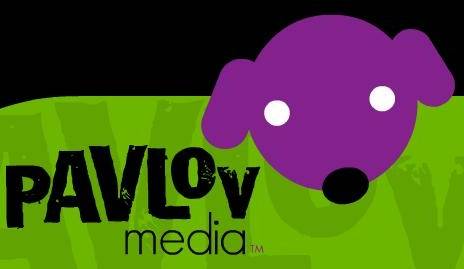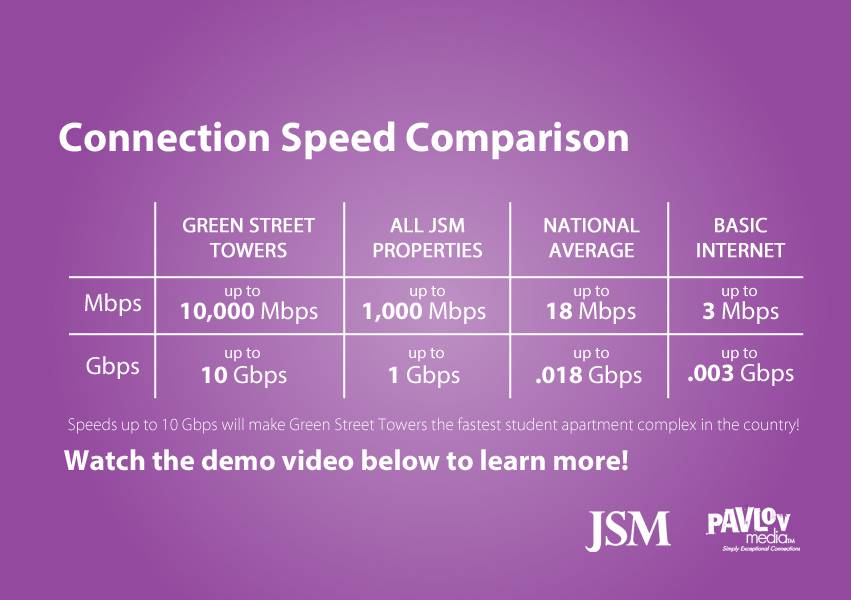In part two, Bridget investigates another ISP, Pavlov Media. Check out part one here.
When UC2B put their fiber ring into the ground, they were already a little bit behind the game.
Providers such as Pavlov Media, Comcast, Volo, and AT&T already had the fiber infrastructure in place. In fact, when I spoke with Chris Hunt, the Executive Vice President of Marketing and Sales for Pavlov Media in Champaign, I was surprised to learn that Pavlov Media already has a large fiber optic ring encompassing C-U, and made their first residential connection to fiber about three years ago.
 Pavlov Media is one of the largest private providers of Internet and cable services to Multiple Dwelling Units (MDUs) in the nation. (Image courtesy of cdn.hotfrog.com)
Pavlov Media is one of the largest private providers of Internet and cable services to Multiple Dwelling Units (MDUs) in the nation. (Image courtesy of cdn.hotfrog.com)
Founded in 1992 in Champaign by Mark Scifres, an Engineering student at the University of Illinois, the company has expanded to several states in the U.S. and has been expanding ever since.
C-U is not the only place Pavlov Media has connected to fiber. They recently finished connecting MDUs in Statesborro, Georgia as well. Hunt noted that Pavlov Media is looking to expand fiber in the flagship community. Indeed, the fiber ring Pavlov Media put in place in C-U has great potential; as Hunt says, Pavlov Media “never really finishes adding more locations and capacity” to the ring.
One of their major successes? When Pavlov Media connected Green Street Towers to fiber in 2013, it made the housing complex the “fastest student complex in the country”.

Image courtesy of www.jsmliving.com
So, if fiber infrastructure is already in place, why aren’t all residential and commercial buildings connected? Fiber is rapidly garnering support in Champaign-Urbana and ISPs are increasing (right now in C-U, no less than five companies — Pavlov Media, IC2B, AT&T, Volo, and Comcast — are offering fiber services). It seems we are only waiting for fiber to become the status quo of Internet services, and for the rest of the nation to catch up.
Fiber’s certainly desirable to many people. As we know from Good fibes part one, fiber is super-fast. It out-performs copper by a long shot, offering gigabit and higher speeds, while the old copper lines still operate in the single- and double-digit megabits per second (Mbps) range.
And as I’ve mentioned, most ISPs already have fiber infrastructure or “fiber rings” with the potential to connect many clients. With speeds above Gigabit (1,000 Mbps), compared to the single- or double-digit speeds copper lines can facilitate, it seems everyone should, in theory, be connected to fiber.
The question remains: why aren’t we?
To quibble with Jessie J just a bit, it is actually all about the money (money, money). It seems like the main thing preventing connection is cost.
Hunt gives me a history of fiber woven together by dollar bills. Back in the early 1990s, when fiber started gaining momentum due to increased broadband needs, it would cost (a very ball park figure) of around $10,000 per household to create a fiber connection. We ran the numbers: at $10,000 per household, using the number of households from the 2010 census, it would cost upwards of $300 million to connect all of the households in Champaign alone. Of course, the prices to connect fiber to a household have drastically decreased since then, to about $700-$1300 per household these days.
Why is it still so expensive? My first guess was infrastructure costs; the old copper lines must have to be uprooted to put the fiber in place.
But Hunt informs me that this is not completely correct.
In many scenarios, the copper can just be bypassed instead of uprooted. There are certainly some variables involved in regards to construction. As with many construction projects, costs will increase, for instance, if you have to cross a bridge or run lines through a historical neighborhood.
For the most part, however, the cost to connect a home is steep due to the economies of scale of fiber technology. This is to say that, if fiber continues to gain popularity nationally, we can expect prices to connect individual households to decrease.
Is fiber inevitable? The simple answer is yes and no. Technology, if it’s about anything, it is about radical change. What looks like a sure thing today may be but a footnote in history tomorrow.
As Hunt tells me:
Technology is always replaced by something better; that’s the tech game. Fiber was invented in ’60s and ’70s and it spread fast in the ’90s. It will be around for a while longer. There are still copper lines in use that have been there for generations. But just like fiber is slowly creeping in to take the place of copper, a new technology will replace fiber.
And technology is deeply about money: what costs how much to whom and where. When we pair the rapid rate of technological change with the potentially stultifying consideration of money, we get what we have now: the waiting game embedded in the race to network C-U with fiber.
Stay tuned as we continue to chronicle the fiber race in Good fibes, part three.








